- Home
- Success Stories
- Success Story Article
STEM Educator Kenneth Jones Revolutionizes Teaching with Gizmos

When ExploreLearning received an email from Kenneth Jones letting us know that he felt that Gizmos are an extremely valuable technological tool and thanking us for our contributions to quality STEM Education, we wanted to learn more. What grades does Jones teach? How does he use Gizmos in his classes? Which features are most helpful to his students?
How a master teacher integrates Gizmos into the classroom
It turned out that Jones was an atypical Gizmos user. Jones is a Master Teacher and member of the UTeach faculty at Columbus State University in Columbus, Georgia. What’s UTeach? It’s an innovative program that allows students to explore teaching first-hand, learn valuable teaching skills, and develop a deeper understanding of math and science. So, Jones is teaching students to be teachers rather than teaching traditional STEM classes.
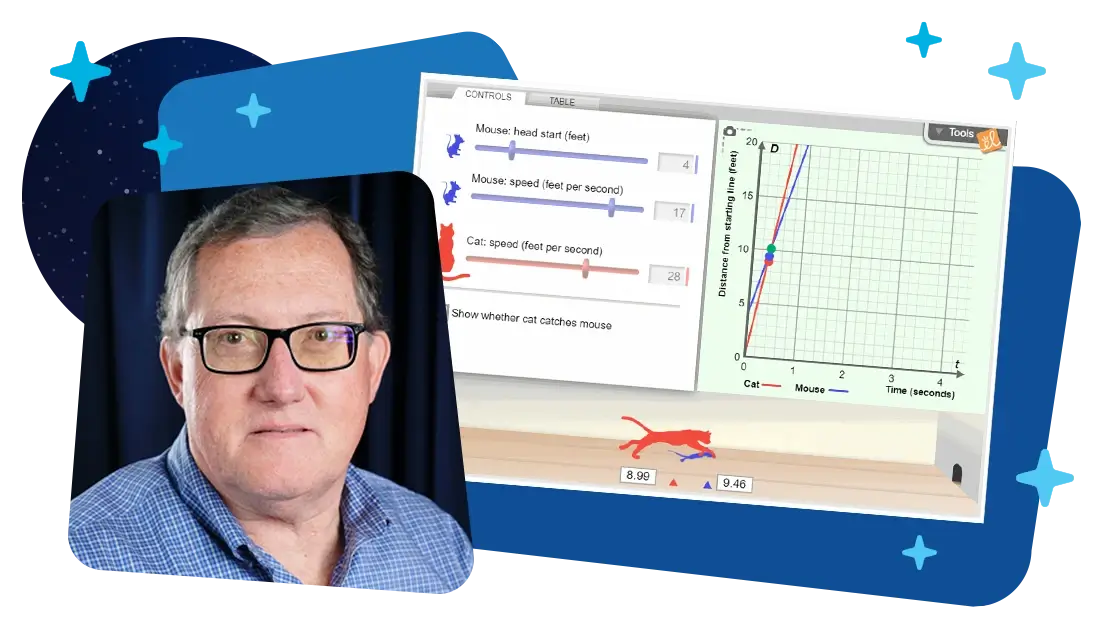
Jones has been in education since 1983. He spent 19 years teaching in grades 7-12 classrooms and the last 11 years teaching in the UTeach program. Another ten years were spent providing professional development to teachers, so Jones has taught at just about every level. Currently, he teaches classes designed to recruit STEM majors in education. “In those courses, I work with students to develop hands-on, inquiry-based lessons that they then go out and teach in area elementary and middle schools,” said Jones. “In the fall, I teach Exploring Technological and Pedagogical Content Knowledge. In spring, I teach a course for our mathematics education majors called Functions and Modeling. I also teach the seminar that students take when they are doing their student teaching.”
The approach in UTeach uses a 5E Model for our lesson plans, which makes Gizmos a perfect fit. “I see the value of the Gizmos simulations as the Explore part of the 5E lesson, where students explore and collect data and examples and then share and talk about their findings during the Explain part of the lesson,” said Jones. “I feel like it might be valuable for the experienced teachers to be exposed to that method of use through our students. Hopefully, the students who have been through our program and seen Gizmos modeled in various ways do more with them in the classroom than just assign them for independent practice as homework.”
Gizmos in action: Revolutionizing the 5E Model in STEM education
Jones uses Gizmos in a demonstration lesson to model the 5E's and how technology can be incorporated as a component. When teaching about the importance of familiarity with various technological teaching tools, his students explore five different Gizmos in their content area and the accompanying teaching materials and evaluate how they might be used in a classroom.
“For using Gizmos with my future teachers, I liked that they were simple to use,” said Jones. “ Unlike some technology where you have to spend time teaching how to operate the tool, the Gizmos were intuitive and easy for students to figure out and then easy for them to explain and introduce to students when they used them in the classroom. I also believe that students of any age learn best when they can see things and when they develop conceptual knowledge. I feel like the Gizmos do a great job of allowing students to explore and figure out relationships for themselves.”
Jones has always been a big fan of Gizmos because of the visual aspect and the fact that Gizmos allow for open exploration of the content. “Students can make choices about what to explore, what variable to change, etc. I feel like it is a good technological model for doing math and science,” said Jones.
“Since my students are really studying education pedagogy rather than specific math or science content, having access to Gizmos helps them see how a well-designed simulation can help them get students to explore as well as see how content can be learned through exploration without the teacher having to go over vocabulary, content, or algorithms ahead of time,” said Jones. “It helps them see that students can discover science and math concepts when good structure and constraints are provided.”
Jones finds Gizmos especially helpful when teaching biology and life science concepts that happen very slowly and in a classroom setting where significant changes can't be demonstrated. “We've been able to use Gizmos like Natural Selection, Ecosystems, Coral Reefs, and Mouse Genetics to explore long-term results in just a short time, which has helped with student understanding. For students teaching math, the Distance-Time and Cat and Mouse Gizmos allow students to explore content or help them illustrate concepts while teaching.”
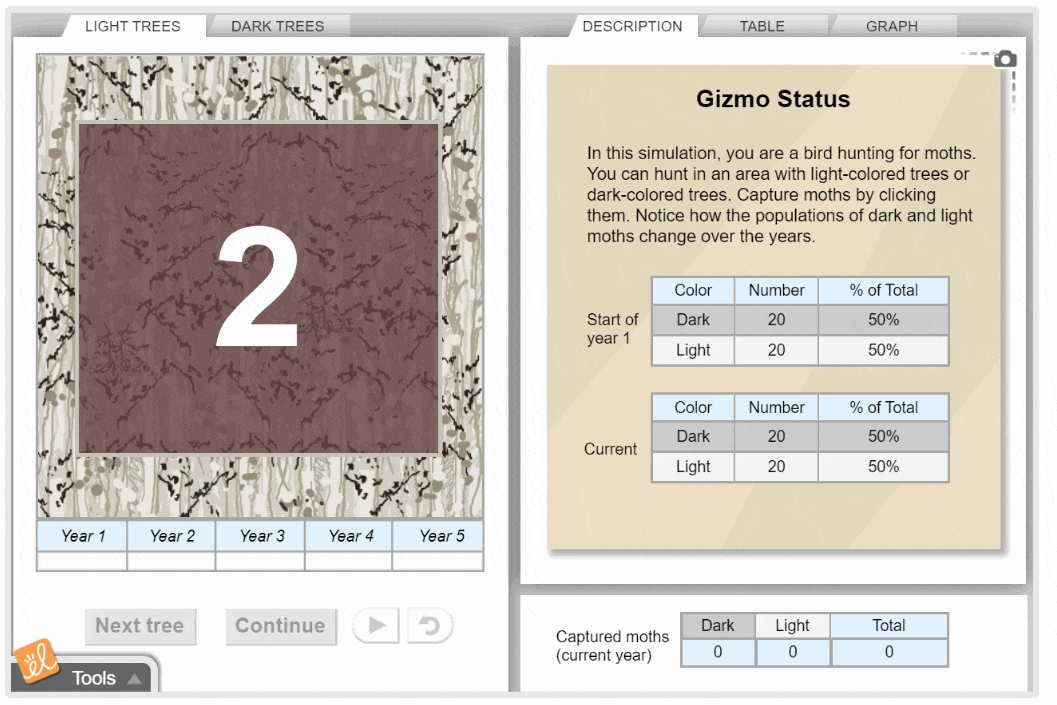
Natural Selection Gizmo
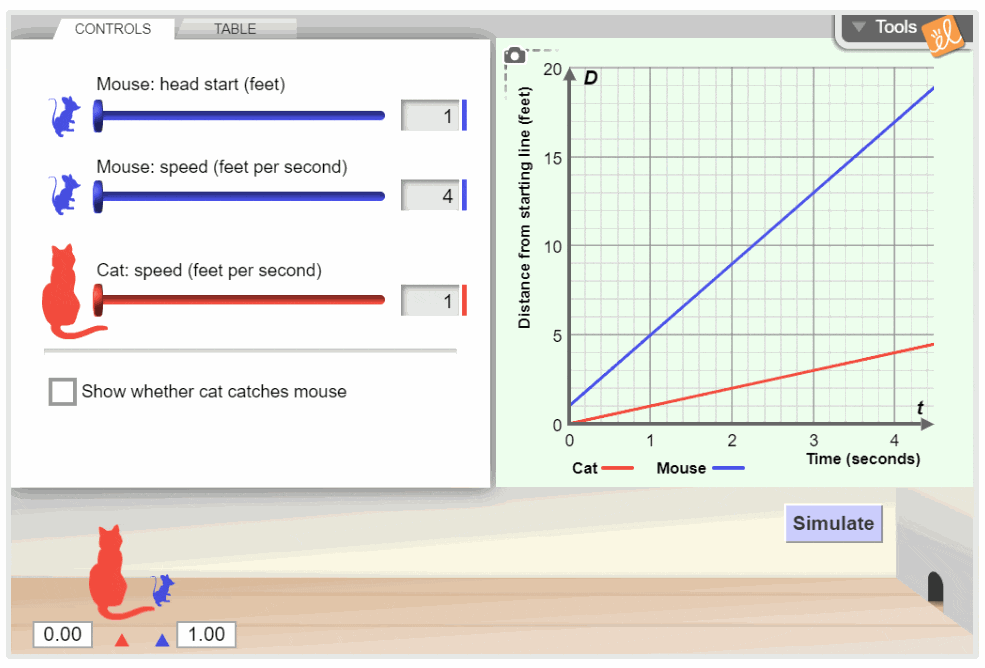
Cat and Mouse Gizmo
How Gizmos enhance learning for future teachers
Jones envisions his students using Gizmos in a variety of ways throughout the 5E process. “I like that the materials are downloadable in Word format so that teachers can edit them to modify the explorations to fit their specific needs. That is the structure of using it that best fits with the 5E- Engage, Explore, Explain, Elaborate, Evaluate format that we use in the UTeach program,” Jones said. “Because it is powerful and the downloadable material is editable, the Exploration can be modified and differentiated so that different students might explore slightly different things.”
Jones sees many Gizmos as effective tools for teachers to demonstrate and explain concepts to students. “It provides an easy way, projected on the board, for teachers to model and simulate complex content,” he said. “I've used the Least-Squares Gizmo several times while teaching my Functions and Modeling course. Even if we don't have class time for the students to explore, I can use it to help illustrate the concepts to make them clearer to students. If I were using it for homework, which I think can be good, I'd give students very specific things to go home, explore, and report back on.”
Jones cautions against misuse, saying that Gizmos shouldn’t be assigned with student handout materials as independent homework without really incorporating effectively into class discussion. “That's one of the reasons that I want to try to have my students use Gizmos in the 5E format when they go into the schools. Hopefully, the teachers, who may or may not have had training in how to use Gizmos effectively, can see a different way to use it. Gizmos is a powerful tool, but just like the maker of the screwdriver, can't control whether you use it instead of a hammer,” said Jones. University faculty like Jones, who prepare future teachers, hope to train more effective Gizmos users.
What are some ways his students have used Gizmos?
A student improved her understanding and found a good modeling tool using the Phases of the Moon Gizmo. A couple of nursing students used the Circulatory System in the online STEM fair. Pattern Finder was used with remote students during the online STEM event, and the remote students were very engaged. Coral Reefs and the Genetics ones have been great for helping students explore long-term events in a short amount of time.
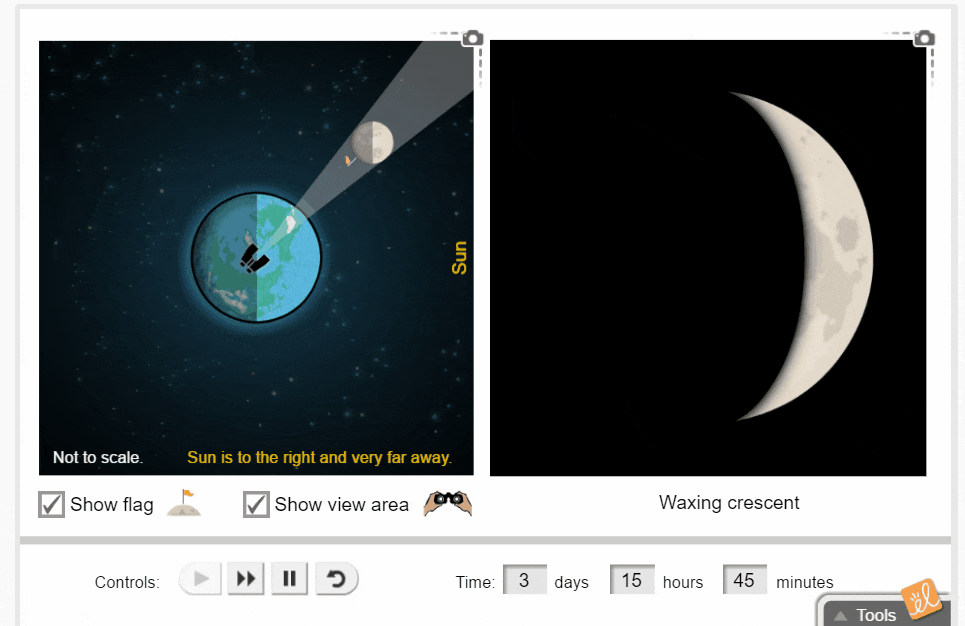
Phases of the Moon Gizmo
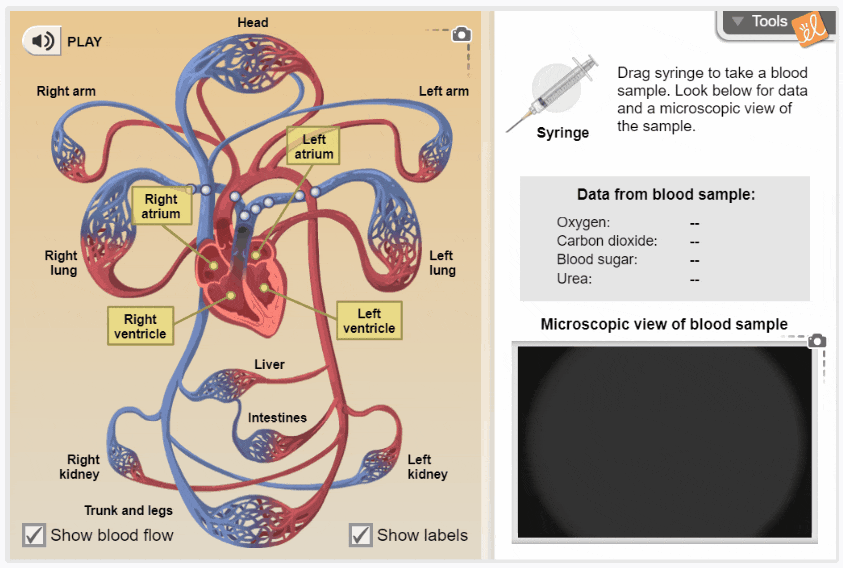
Circulatory System Gizmo
“My students have enjoyed using them, both when they've experienced them as the ‘student’ and when they have used them as the ‘teacher’ in teaching content during their lessons,” Jones said. “They've found them easy to use and have appreciated that the simulations provided a tool for delivering inquiry-based instruction and lab-type activities without having to haul a lot of equipment into the classrooms.”
Jones appreciates having access to Gizmos and loves introducing his students to such a good tool. When his students graduate and have their own classrooms, he hopes they have access to Gizmos and use them effectively.” It’s clear that Gizmos makes an impact on his students. “Often when students are doing their student teaching, they'll remember some Gizmo that we used either in class contact me to find out exactly what it was called and how to get access to it,” said Jones.
One of his students, who had various childhood struggles, returned to college as a non-traditional student. Although she was a little older with the responsibilities of kids and a family at home, she was an outstanding biology student at the University. After participating in several lessons where Jones had students explore Gizmos, she said, "Wow. If I'd been able to learn this way when I was in school, I'd have actually understood a whole lot more and been a much better student."
If you’re hoping to make that kind of impact on your students, don’t hesitate to take a Gizmos trial.
You might also like these stories...